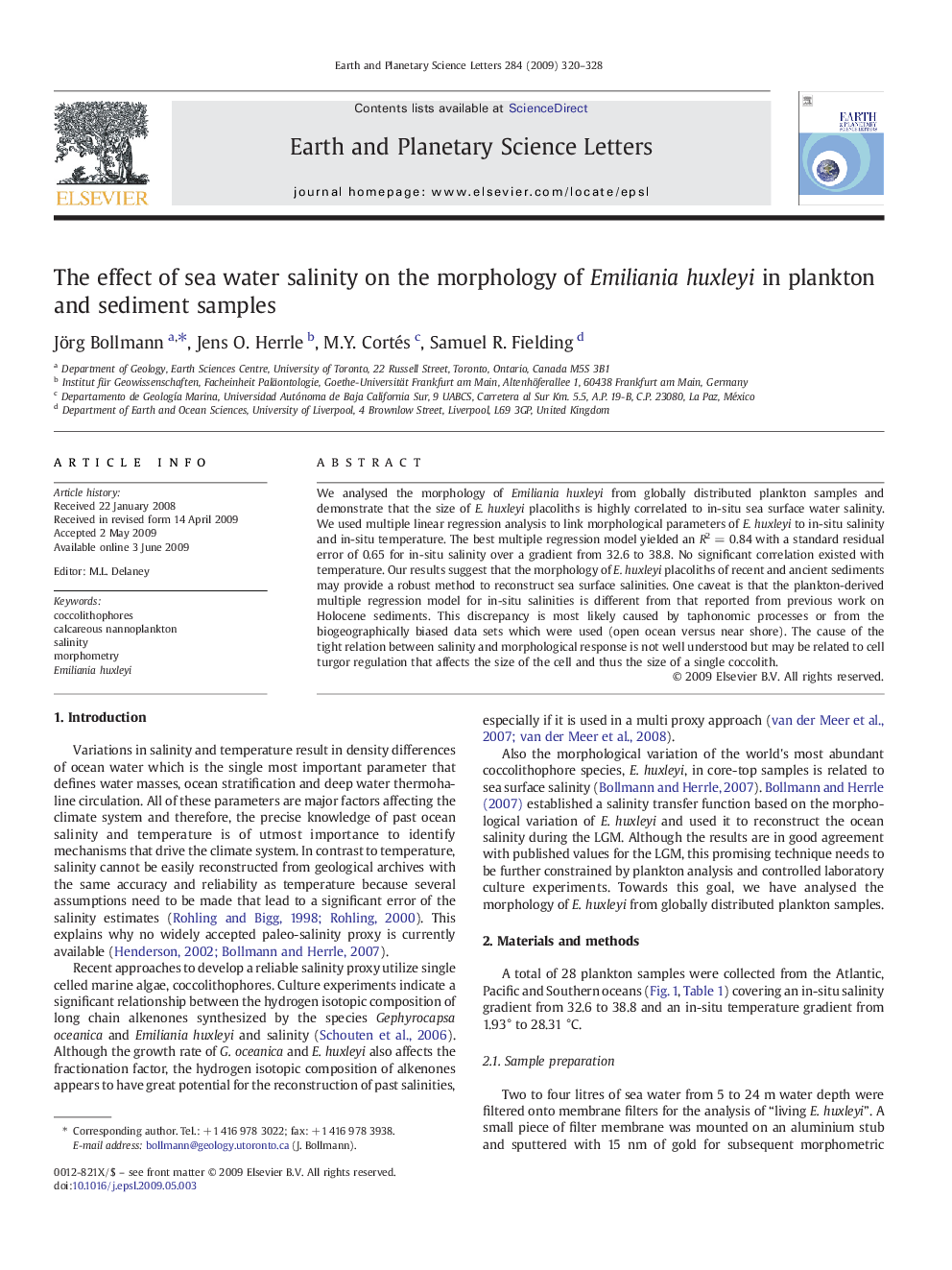| Article ID | Journal | Published Year | Pages | File Type |
|---|---|---|---|---|
| 4678985 | Earth and Planetary Science Letters | 2009 | 9 Pages |
We analysed the morphology of Emiliania huxleyi from globally distributed plankton samples and demonstrate that the size of E. huxleyi placoliths is highly correlated to in-situ sea surface water salinity. We used multiple linear regression analysis to link morphological parameters of E. huxleyi to in-situ salinity and in-situ temperature. The best multiple regression model yielded an R2 = 0.84 with a standard residual error of 0.65 for in-situ salinity over a gradient from 32.6 to 38.8. No significant correlation existed with temperature. Our results suggest that the morphology of E. huxleyi placoliths of recent and ancient sediments may provide a robust method to reconstruct sea surface salinities. One caveat is that the plankton-derived multiple regression model for in-situ salinities is different from that reported from previous work on Holocene sediments. This discrepancy is most likely caused by taphonomic processes or from the biogeographically biased data sets which were used (open ocean versus near shore). The cause of the tight relation between salinity and morphological response is not well understood but may be related to cell turgor regulation that affects the size of the cell and thus the size of a single coccolith.
